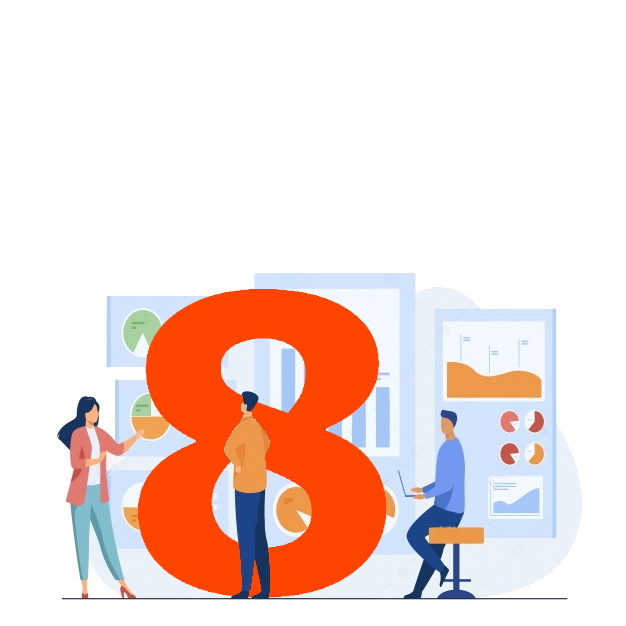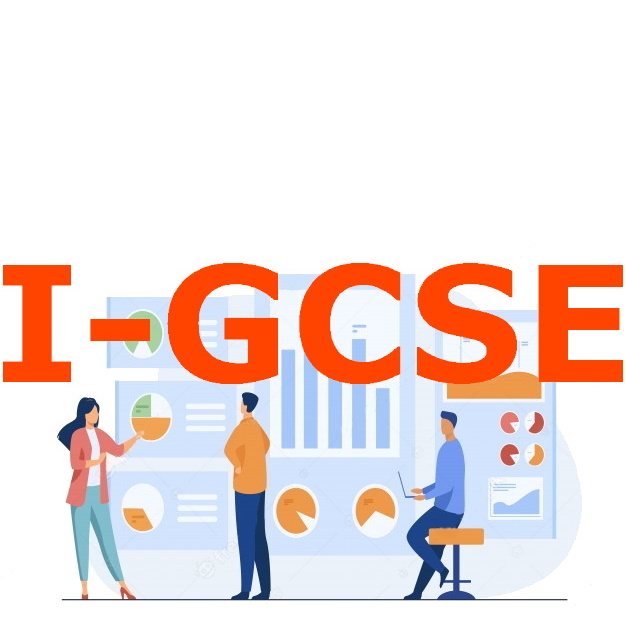
Business Studies 7
Grade 7 Business Studies -
Community savings schemes
Financial institutions and organisations promoting entrepreneurship
Financial organisations
History of banks
Opening a savings account
Personal savings
Purpose of savings
Services offered by banks
The role of banks
Contribution of technology to improve productivity and economic growth
Definition of production
Effects of productivity on economic growth
Factors of production
Inputs and outputs
Meaning of economic growth
Mjeaning of productivity
Sustainable use of resources
Technology in the production process
Causes of socio-economic imbalances
Creating sustainable job opportunities
Education and skills to fight inequality and injustice
Inequality in South Africa
Rural challenges
Urban challenges
Hosting Entrepreneur's Day
Income and expenditure statement
Planning Entrepreneur's Day
Presenting your product
Achieving goals
Budget for Entrepreneurs day
Needs and wants of consumers
Setting goals
Simple cost calculation
SWOT analysis
The concept of advertising
Use of recycled material
What is involved in starting a business
Definition of an entrepreneur
Entrepreneurial actions of buying, selling, producing and making a profit
Skills of an entrepreneur
Definition of a budget
Income and expenses in detail
Personal and business budget
Business income and expenses
Personal income and expenses
Personal statement of net worth
Savings and investments
Banking, financial records and transactions
Budgets and savings
Capital, Assets, Liabilities
Income, expenses, profits losses
Advantages and disadvantages of different businesses
Effects of natural disasters and health epidemics on businesses
Formal and informal businesses
Role of businesses as producers and consumers
Goods and services
How to recycle and reuse goods to satisfy needs and wants
Producers and consumers
Basic needs of individuals, families, communities and countries
Primary and secondary needs
Unlimited wants and limited resources to satisfy needs and wants
Different types of money
Learn about history of money
Modern money
Traditional societies and bartering

Business Studies 8
Grade 8 Business Studies -
Assets and banking
Capital
Cash receipts and cash payments
Debit and credit
Income and expenses
Liabilities
Owner's equity
Profit and losses
Sole trader
Subsidiary journals
Transactions
Advantages
Businesses and their role in sustainable use of natural resources
Businesses and their roles in sustainable job creation
Characteristics
Closed corporations
Disadvantages
Partnerships
Private and public companies
Sole traders
Different levels of government
Meaning of government
Roles of different levels of government iro businesses
Roles of different levels of government iro households
Direct and indirect taxes
Government expenditure on services
How does the National Budget work?
Influence of the National Budget on growth
Impact of development on the environment
Lifestyles
Modern societies
Rural societies
Self-sufficient societies
Unemployment
Use of resources to promote a healthy environment
Bank statements
Cash invoices
Cheques and cheque counterfoils
Deposit and cash register slips
Receipts
General Ledger
Introduction of Cash journals for service business
Source documents and subsidiary journals
The accounting cycle and transactions
Trial balance, Income statement and Balance sheet
Cash transactions in CRJ
Close off CRJ
Closing off CRJ
Concept of CRJ (service business)
Effects on accounting equation
Entering cash transactions in the Cash Receipts Journal
Format and uses of columns in CRJ
Source documents to complete CRJ
Capital - borrowed and owned
Entrepreneurship
Labour
Natural resources
Remuneration for factors of production
Role of workers
Different types of markets
Factor markets
Closing off of CPJ
Combined transactions in the CRJ and CPJ
Concept of a CPJ of a service business
Effect of cash transactions on the accounting equation
Entering of cash transactions in the CPJ
Formats and uses of the columns in the CPJ
Source documents used to complete a CPJ
Characteristics of good management
Different levels of management
Different styles of management
Management tasks
Balancing of accounts
Double entry principle
Prepare a Trial Balance

Business Studies 9
Grade 9 Business Studies -
Calculating selling price and cost price
Calculating selling price and cost price using a mark-up%
Cash transactions of a trading business
CRJ and CPJ of a trading business
Effects of cash transactions on accounting equation
Advantages and disadvantages of economic systems
Characteristics
Global economy
Major economic systems
Origins of economic systems
Double entry principle
Posting from CRJ and CPJ to General Ledger
Posting to General Ledger
Preparing a Trial balance of a Trading business
Sections and format of General Ledger
Businesses
Flow of goods and services, money and fop
Government
Households
Illustrate the circular flow
Participants in the circular flow of a closed economy
Accounting cycle
Credit sales
Debtors
Debtors allowance
Effect of credit transactions on the accounting equation
National Credit act
Postings to the Debtors Ledger and General Ledger
Record payments by debtors in CRJ
Recording transactions in Debtors Journal (DJ)
Changes in quantity demanded
Changes in quantity supplied
Concepts of supply and demand
Equilibrium price and quantity
Graphical illustration of change in demand and supply
Increase in supply and demand
Law of demand and graphic illustration
Law of supply and graphical illustration
Role of the three sectors in the economy
Sustainable use of resources in the three sectors
The interrelationship of the three sectors
The primary, secondary and tertiary sectors
Types of businesses found in the three sectors
Types of skills required in each sector
Concept of trade unions
Contribution to sustainable growth and development
Effect of trade unions in business
Historical development of trade unions
Roles and responsibilities
Accounting cycle
Creditors
Creditors allowance
Observe the effect of credit transactions on the accounting equation
Postings to the Creditors Ledger and General Ledger
Record payments to creditors in CPJ
Recording of transactions in the Creditors Journal (CJ)
Administration, purchasing, marketing, finance
Characteristics of these functions
Functions of businesses
General management and risk management
Public relations, Human resources, production,
Role and importance of business functions
Posting to the Debtors and Creditors Ledger
Posting to the General Ledger
Prepare the Trial balance
Recording of cash and credit transactions of sole trader
Subsidiary journals - CRJ, CPJ, CJ, CAJ, DJ, DAJ
Components of a business plan
Concept of business plan
Financial plan
Format of business plan

International GCSE Business Studies
International GCSE Business Studies -
Sub Category
How businesses increase added value
Importance of specialisation
Needs and wants
Purpose of business activity
Scarcity and opportunity cost
The purpose and nature of business activity
Changing importance of business classification
How businesses are classified
Private and public sector decisions
Business plan
Characteristics of successful entrepreneurs
Measuring business size
Why some businesses fail
Why some businesses grow and others remain small
Franchises and joint ventures
Private and public limited companies
Public sector organisations
Sole traders and partnerships
Unincorporated and incorporated businesses
Business objectives and how their importance can change
Objectives of private sector and public sector enterprises
The role of stakeholder groups
Importance of a well-motivated workforce
Methods of motivation
Motivational theories
Leadership styles
Simple organisation charts
The role of management
Trade unions
Benefits and limitation of part-time and full-time employees
External recruitment
Importance of training
Internal recruitment
Legal controls over employment
Main stages in recruitment and selection of employees
Methods of training
Reasons for reducing the size of the workforce
Recruitment and selecting employees
Choosing the method of communication
Communication barriers
Effective communication
How communication barriers can be reduced or removed
Importance to the business
Market Changes
Market segmentation
Niche marketing and mass marketing
The Role of Marketing
Presentation and use of market research results
The role of market research and methods used
Aims of promotion
Marketing budget and promotion decisions
Place - distribution channels
Technology and the marketing mix
Choosing a marketing strategy
Legal controls related to marketing
Opportunities and problems of entering new foreign markets
Control measures
Difference between goods and services
How technology has changed production methods
The main methods of production
What is production?
Break-even analysis
Economies of scale
How are costs classified?
Using cost data to make simple cost-based decisions
How businesses achieve quality production
Quality assurance
Why quality is important
Choosing a location
Factors influencing location and relocation decisions
The role of legal controls
Why businesses locate their operations to another country
Costs and benefits of developing new products
Price elasticity of demand and pricing decisions
Pricing methods
Product
Product life cycle
The role of packaging
Benefits and limitations of communication methods
Communication barriers
Effective communication and how it is achieved
Market changes
Market segmentation
Niche marketing and mass marketing
The role of marketing
Presentation and use of market research results
The methods of market research
The role of market research
Cost and benefit of developing new products
Price elasticity
Pricing methods
Product
The product life cycle
The role of packaging
Aims and forms of promotion
Distribution channels
Technology and marketing mix
The marketing budget and promotion decisions
Choosing a marketing strategy
Legal controls related to marketing
Opportunities and problems of entering new foreign markets
Control measures
Difference between goods and services
How technology has changed production methods
The main methods of production
What is production?
Break-even analysis
Economies of scale
How are costs classified?
Using cost data to make simple cost-based decisions
How businesses achieve quality production
Quality assurance
Why quality is important
Choosing a location
Factors influencing location and relocation decisions
The role of legal controls
Why businesses locate their operations to another country
Alternative sources of capital
Choosing sources of finance
Factors influencing the choice of finance
Internal sources of finance
Main sources of finance
Short-term and long-term finance
Why businesses need finance
Financing a short-term cash shortage
Interpreting cash-flow statements
What is a cash-flow forecast?
Why cash is important to businesses
Working capital
How to interpret a statement of financial position
Main parts of a statement of financial position
Difference between profit and cash
Importance of profit

International GCSE Accounting
International GCSE Accounting
Accounting principles
Assets
Capital
Technology
What are liabilities?
What are the main financial statements?
What is accounting?
What is accounting equation?
How to prepare a simple statement of financial position
Preparing a classified statement of financial position
Recording transactions
Transactions
What is this section about?
Buying goods for resale
Recording expenses
Selling goods
The drawings account
What about inventories?
What are expenses
How to think about these accounts and double entry
Where accounts appear in trial balance
Calculating profits and losses
How do accounting records show a business's profit/loss
What is profit
How is gross profit recorded?
Completing the capital account at the end of financial period
How are expenses recorded in the income statement
How is the profit recorded in the accounts?
What happens if a business makes a loss?
The rules for balancing and closing accounts
Multiple choice questions
Recording credit purchases in a purchases journal
What are source documents
Posting credit purchases of goods for sale
Processing credit sales
Accounting records and trade discount
Debit notes
Purchases return journal
Source documents for the purchases return
Recording returns in the financial statement
Introduction
Source documents for money transactions
The cash book
Cash discount
Statement of account
What happens when a bank account becomes overdrawn?
How cash transactions are recorded
Introduction
Source documents
Posting to the general ledger accounts and the purchases ledger accounts
What you should do with the balance of the petty cash
How to make journal entries
Introduction
Error of commission
Error of omission
Error of principle
Errors not revealed by the Trial balance
Journalise entries for these errors
Compensation error
Error of complete reversal
Error of original entry
Journal entries
Journal entries
Suspense account and miscast
Correcting a draft statement of financial position
Correcting draft profit figures
Advantages of the reconciliation process
Comparing a cash book (bank columns) with a bank statement
Complete bank statement
How to prepare a bank statement
Introduction
Preparing a bank reconciliation statement
Simple bank statements
More about preparing control accounts
Other entries in control accounts
Preparing sales and purchases ledger accounts
Adjusting expenses
Adjusting income
Irrecoverable debts and provisions for doubtful debts
Irrecoverable debts and the recovery of debts written off
Keeping a provision for doubtful debts up to date
Preparing financial statement with adjustments to expenses and income
Provisions for doubtful debts
Recording the disposal of a non-current asset

International GCSE Economics
International GCSE Economics -
Sub Category
Nature and purpose of trade unions
Economic and free goods
The economic problem
Factors of production and their rewards
Mobility, quantity and quality of factors
Definition and examples of opportunity cost
Opportunity cost and economic decision making
Movement along and shifts in a production possibility curve
The production possibility frontier
The difference between macro and microeconomics
Market equilibrium and market disequilibrium
Resource allocation decisions
The market system
Causes of shifts in the demand curve
Price and demand
Shifts in demand with movements along demand curve
Changes in supply
Conditions of supply
Individual and market supply curves
Price and supply
Market equilibrium
Causes and consequences of price changes
Draw demand and supply diagrams
Elasticity of demand and total spending
Price elasticity of demand
Price elasticity of supply
How system works in variety of countries
Merits and weaknesses of a market economic system
Role of private and public sectors
The market economic system
Causes of market failure
Private and social costs and benefits
The nature of market failure
Define terms such as privatisation, nationalisation and DPS
Effects of microeconomic policy measures
Government influence on micro-economy subsidies
Government influence on microeconomy indirect taxes
Government influence on microeconomy regulation
The nature of a mixed economy
Central banks
Commercial banks
Money
Income and expenditure patterns
Influences on spending, saving and borrowing
Bargaining power of unions
Differences in earnings
Division of labour specialisation
Factors affecting occupation choice
Wage determination
Ways in which government policy affect wages
Classification of firms
Economies and diseconomies of scale
Growth of firms
Mergers and integration
Small firms
Nature and purpose of trade unions
Advantages and disadvantages of methods of growth
Demand for factors of production
Labour-intensive and capital-intensive production
Production and productivity
Fixed and variable costs
Objectives of firms
Output and costs
Revenue
Total and average costs
Competitive markets
Monopoly markets
Government roles
Classification of taxes
Elements of fiscal policy
Fiscal policy and government aims
Impact of balanced, deficit and surplus budgets
Nature of budget surplus, deficit and balanced budget
Principles and impacts of taxation
Reasons for government spending and taxation
Effects of monetary policy on macroeconomic aims
How monetary policy may help government to achieve economic aims
Monetary policy measures
Economic growth and recession
Government policies for economic growth
Illustrating growth and recession
Measuring Gross Domestic Product
Causes of unemployment
Consequences of unemployment
Full employment
Patterns and levels of employment
Causes and consequences of deflation
Causes of inflation
Consequences of inflation
Policies to control inflation and deflation
The Retail Prices Index and inflation
Comparing living standards and income distribution
Indicators of living standards
Causes of poverty
Policies to alleviate poverty
Changes in population structure and their effect on an economy
Factors that affect population growth
Problems of population change
Reasons for different rates of population growth
The effect of changing population sizes on an economy
Different rates of development
Factors affecting development
Advantages and disadvantages of specialisation
Globalisation
Methods of protection
Multinationals
Reasons for protection
The benefits of free trade
Causes of foreign exchange rate fluctuations
Consequences of fluctuations
Exchange rates
Floating and fixed exchange rates
Current account deficit and surplus
Effectiveness of policies
Impacts of deficit or surplus
Policies to achieve balance of payments stability
The current account of the balance of payments
The effects of supply-side policy
Conflicts between government aims
Macroeconomic aims